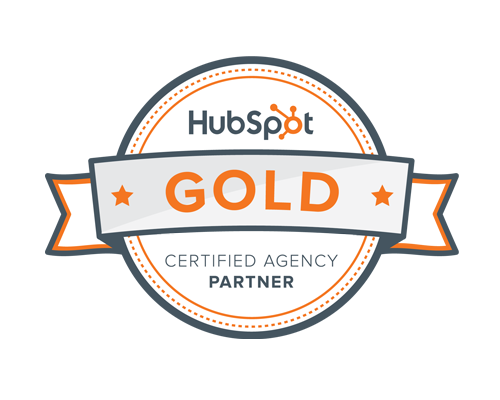3 SEO Secrets Search Engines (& Your Target Audience) Wish You Knew
Ah… SEO. Remember the days where the rules of optimization were like the wild west of the internet? You had words like “cat” spammed across the pages of a website selling cat food (sometimes written invisibly for extra measure), people abusing backlinks they purchased, and hordes of “Gotcha!” headlines used to clickbait you into reading content completely different from what you were expecting—all in hopes of ranking higher in the search results.
Though these black hat practices are far from gone, Google has since laid down the law to heavily penalize this sketchy behavior in hopes of “organizing the world’s information and making it universally accessible and useful.” It’s a noble mission statement that also means ranking high has gone from “easy-peasy-lemon-squeezy” to “stressed-depressed-lemon-zest.”
So what white hat techniques should your marketing team use to improve your site’s search engine ranking without resorting to black magic? Here are 3 SEO secret tips.
1. Don’t Chase Search Rankings, Chase Utility
At the time of writing this — there exists 2 billion websites and 600 million blogs in the world (but since 17% of these websites are active, you’re really only competing against 199,999,999, no sweat!)
These numbers aren’t meant to scare you, but to help you consider the fact that if so many people are generating more URLs than society can possibly consume, how are they getting eyes on their content? (Spoiler: most of them aren’t.)
Among those, 600 million blogs are companies that still take “the more, the merrier” approach—churning out low-quality, duplicated, or heavily templated content in an attempt to increase the likelihood of SEO traffic, and thus, sales.
But what Google really rewards isn’t volume, length or keyword stuffing, it’s how useful your content is to your audience. Does it resonate with them because it answers their queries with genuinely helpful content? Is it relevant and authoritative enough to compel visitors to share it with others? The name of the game here is quality over quantity. Matching and satisfying your audience’s search intent is what will help you rank higher.
SEO is more than just optimizing for search engines, it’s optimizing for humans.
2. Know Your Keyword Strategy
Now that you know not to go gung-ho with keywords (lest you want your search ranking and reputation to plummet), let’s talk about how to find the right ones to create a game plan. Ideally, these keywords should reflect the ideas and topics your content covers, but also aim to satisfy user intent—A.K.A. the person’s goal when they type a query into a search engine. Here’s a step-by-step breakdown on how to build a keyword strategy:
- Create a list of keywords and keyphrases based on your offers, the trends of your industry, and what you believe your target audience will type to find you. These will be your seed keywords used to grow your list.
- Organize similar words into keyword clusters—a group of keywords that represent searchers with similar buying intent. For example, “striped t-shirt”, “blue t-shirts”, and “100% cotton t-shirts” are different keyphrases, but all represent searchers looking to buy t-shirts.
- Select what you want your focus keywords to be—these will be the words you’re creating content around and testing to see how difficult it’d be to rank in comparison to your competition.
- Layout a roadmap that details what keyword clusters represent your core topics (also known as your website’s pillar pages) and plan to reinforce your pillar pages with blog content. The blogs should link back to the appropriate pillar page to up your chances of ranking for those top-level keywords.
The links between related pages, known as your topic clusters, will help improve your SEO by establishing your expertise on a specific topic. (Side note: you’ll have to play the long game here, as the Google gods will unfortunately not place you on the first page of search results overnight.)
3. Stay the Course with White Hat SEO
Okay, this SEO secret is cheating a bit since it’s really just a bunch of SEO secrets rolled into one, but that just means you’re getting more value for your money! (wink) You might recall “white hat techniques” mentioned at the beginning of this article. Just so we’re on the same page here—white hat SEO basically means you’re abiding by Google Search Essentials, while black hat SEO means you’re trying to pull a fast one on the algorithm.
But with Google staying ahead of the curve and changing its algorithm about 500 to 600 times in a year, no one can truly outplay the ever-changing game for long. So why run the risk of Google smiting your reputation for 15 minutes of front page fame? Besides, as a marketer, you know your target should be a human audience, not just a search engine crawler. Take a look at how White Hat SEO can improve your search traffic while keeping your visitors around:
Prioritize Quality Mobile Content
A surprise sequel to the first SEO secret but with a twist: In addition to making "good" relevant content, you should make sure it looks good on mobile as well. With more than 60% of total online searches made through mobile devices, Google wasted no time in prioritizing mobile content first. Even when you’re searching on desktop, the result you get is based on mobile rankings—so be sure to optimize for phones and make sure you’ve a responsive website (one that automatically adjusts for different screen sizes and viewports).
Pay Attention to Other User Experience (UX) Elements
Mobile responsiveness is a big UX element, but there are quite a few others to note. Google treats content based on how people react to it. (How long are visitors sitting on this page? Are they bouncing out of the site quickly?) Likewise, the very same engagement metrics are defined by the user’s experience with the site:
- If your website is too complex to navigate through—bounce.
- If there’s not enough white space to make text easier to read—bounce.
- If your website’s speed is slower than dial-up from the 90s—you guessed it.
Because there’s such an overlap between UX and SEO, it’s best you don’t skip over it if you want to improve your ranking.
URL, Meta Descriptions, ALT Text for Images
You wouldn’t think so, but URLs aren't just scanned by Google search crawlers. People would rather share a short, easy on the eyes URL with a slug that reflects the topic than share one that looks like the Matrix code. Keep it concise yet meaningful - just like your meta descriptions that are meant to tell the search engine spiders a synopsis of your content.
Lastly, ALT text involves making your content more accessible with descriptions of the image. Again, you aren’t keyword stuffing here, you’re enriching the user experience.
Final Thoughts
Chasing search engine rankings by manipulating the algorithm might have worked in the old days, but if you’re caught doing that in this era of white hat SEO, it’s the quickest way to have both your site and reputation poof out of existence. Playing by the rules may seem time-consuming and might not produce immediate results, but it’s the best way to improve your rankings without worrying about getting penalized AND your best bet at creating an authoritative and scalable web presence.
Not sure where to start with your SEO strategies? We can help you optimize your content to increase the likelihood of it being read by your audience. Contact us to start ranking higher and engage your website visitors.





